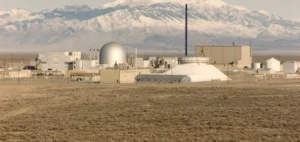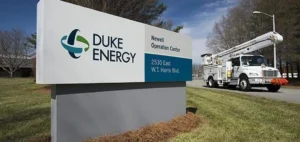The development of small modular nuclear reactors (SMRs) in the Czech Republic marks a significant step in the country’s energy transition.
The Czech government, under the aegis of Prime Minister Petr Fiala, recently approved a strategic partnership with the British group Rolls-Royce for the design and production of these technologies.
This initiative comes at a time when the Czech Republic is seeking to diversify its energy sources and reduce its dependence on fossil fuels, particularly coal, which accounts for a significant proportion of its electricity production.
The choice of Rolls-Royce as a partner for the development of SMRs is part of a broader strategy by state-owned CEZ, which plans to install up to ten of these reactors by 2050.
CEZ previously evaluated several options, including collaborations with companies such as Westinghouse and GE Hitachi, but ultimately opted for Rolls-Royce, which has demonstrated recognized expertise in nuclear technologies.
The Prime Minister emphasized that this cooperation would not only enable the development of reactors, but also strengthen Czech industrial capabilities in the nuclear sector.
The advantages of small modular reactors
SMRs offer several advantages over conventional nuclear reactors.
Their modular design enables faster, more cost-effective construction, as components can be pre-assembled in the factory and transported to the installation site.
What’s more, these reactors are generally considered to present a reduced risk of serious accident, making them more attractive to policy-makers and investors.
By integrating these technologies, the Czech Republic hopes not only to modernize its energy fleet, but also to meet growing demands in terms of safety and sustainability.
The transition to SMRs is also part of a broader energy policy aimed at increasing the share of nuclear power in the national energy mix.
At present, around 30% of the country’s electricity comes from the Temelin and Dukovany nuclear power plants, and this proportion is set to rise to 50% as coal-fired plants are gradually shut down.
This development is essential if we are to meet the decarbonization targets set by the European Union and respond to growing concerns about climate change.
Project challenges and prospects
Despite the potential benefits of SMR, a number of challenges remain.
Implementing this technology requires significant investment and close coordination between the various players in the sector.
Moreover, competition in the nuclear reactor market is intense, with companies such as KHNP recently winning a contract to build two conventional nuclear units at Dukovany.
This project, estimated to cost almost nine billion dollars, underlines the importance of competitiveness in the energy sector.
The rise of SMRs could also have geopolitical implications.
By developing its own nuclear capacities, the Czech Republic could strengthen its energy independence and reduce its vulnerability to fluctuations in world energy markets.
As CEZ spokesman Ladislav Kriz points out, “strategic cooperation with Rolls-Royce enables Czech companies to develop and produce cutting-edge nuclear technologies”.
This dynamic could also encourage innovation and job creation in the energy sector.
Conclusion on the Czech Republic’s energy future
The Czech Republic’s small modular nuclear reactor initiative represents a significant step towards a sustainable energy transition.
By partnering with Rolls-Royce, the country is committed to modernizing its energy infrastructure while addressing contemporary environmental challenges.
The ability to develop advanced nuclear technologies could not only strengthen national energy security, but also position the Czech Republic as a key player in the European energy landscape.
The next few years will be crucial for observing how this strategy unfolds, and what the economic and environmental benefits will be.






















